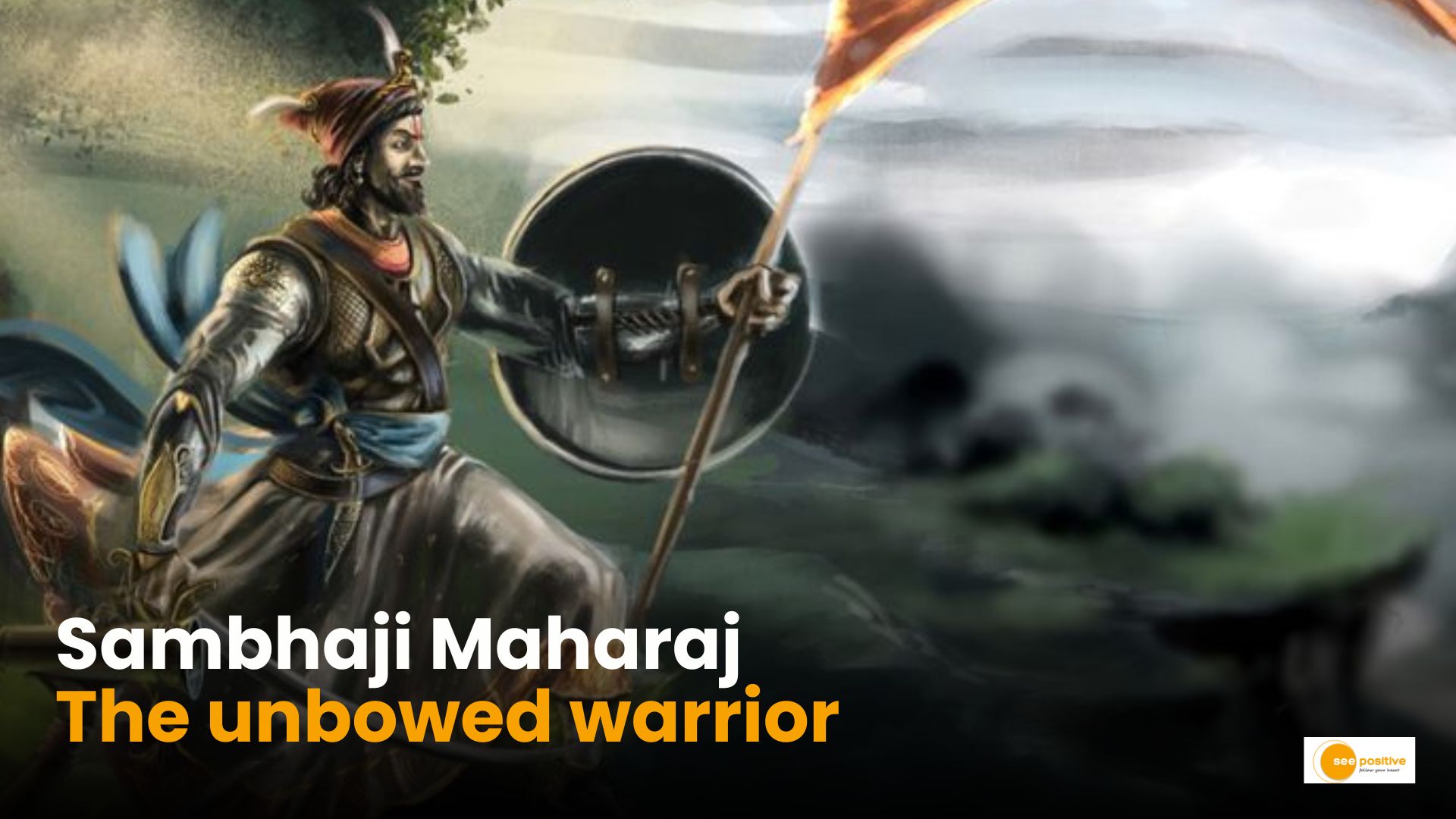“Chhava”: Sambhaji Maharaj‘s contributions to the Maratha Empire are celebrated today in folklore and history.
Sambhaji was born in 1657 to Shivaji. He was the eldest son of Shivaji and was fondly called as “Chhava” meaning little one of Tiger in Marathi. Sambhaji Maharaj was the second Chhatrapati (king) of the Maratha Empire in India, succeeding his father, Chhatrapati Shivaji Maharaj.
Known for his courage, valor, and determination, he played a significant role in the expansion and consolidation of the Maratha Empire during his reign. Despite facing overwhelming odds, Sambhaji led his forces against the Mughals with remarkable resilience. However, he was eventually captured by the Mughals in 1689, after a betrayal by some of his own men.
Nurturing in early years
Though he lost his mother, Saibai, when he was just two years old, Sambhaji was nurtured and cared for by his grandmother Jijabai, who played a crucial role in shaping his character. Jijabai, who had raised Shivaji Maharaj, ensured that Sambhaji grew up with a strong sense of Maratha pride and leadership.
Bravery & intellect both
Sambhaji’s physical strength, bravery, and intellect set him apart. He was not only known for his military prowess but also for his scholarly pursuits. Being fluent in multiple languages, including Sanskrit, Sambhaji was highly educated and understood the value of culture and knowledge alongside warfare.
Military strategy & prowess
During his early military career, Sambhaji proved his exceptional skills in warfare. His first significant victory was at Ramnagar, where he displayed brilliant military strategy at the young age of 16 and led the Maratha forces to victory. His campaigns in Goa and Karnataka in 1675-76 further solidified his reputation as a skilled commander.
Sambhaji’s reign
His reign lasted from 1681 to 1689, a period marked by military conflicts with the Mughal Empire, particularly under Emperor Aurangzeb, who sought to crush the Maratha Empire.
Protecting Shivaji Maharaj’s legacy
Sambhaji Maharaj worked diligently to protect and expand his father Shivaji Maharaj’s legacy while facing significant external threats, particularly from the Mughal Empire and the Portuguese, who sought to undermine the Maratha Kingdom. He installed capable and trusted administrators who were key to maintaining the functioning of the empire, ensuring that the internal affairs were managed properly while resources were mobilized effectively for defense and expansion.
One of the major steps he took was forming a Council of Eight Ministers (Ashta Pradhan), much like his father did, to assist in governance. This council had members overseeing different aspects of governance, such as military affairs, finance, justice, and diplomacy.
Battles with Aurangzeb & Mughals
Aurangzeb’s primary goal was to subdue the Marathas and completely dismantle Shivaji’s legacy. Sambhaji Maharaj was subjected to brutal torture and execution by Aurangzeb, who had him publicly executed in an inhumane manner. Despite being outnumbered by the Mughal forces, Sambhaji resisted the Mughals with remarkable tenacity. He fought several battles with the Mughals and always emerged victorious.
Ramnagar Battle (1677): Sambhaji’s first major military victory at the age of 16, where he successfully led Maratha forces against the Mughals.
Battle of Wai (1680s): Sambhaji’s forces repeatedly repelled Mughal advances, using guerrilla tactics that Shivaji had pioneered.
Sambhaji’s Campaigns in Goa and Karnataka (1675-76): He led several successful campaigns against the Portuguese and Mughal-allied forces in southern India, continuing the expansion of Maratha power.
A revered figure in Maratha history
Sambhaji’s early achievements and dedication to his empire laid the foundation for the Maratha Empire’s resilience, even after his tragic and untimely death. Despite this tragic end, his sacrifice has made him a revered figure in Maratha history, and his legacy as a warrior and patriot continues to inspire generations.


